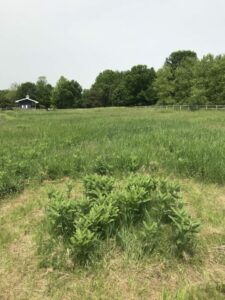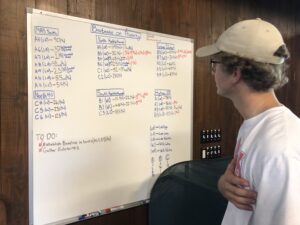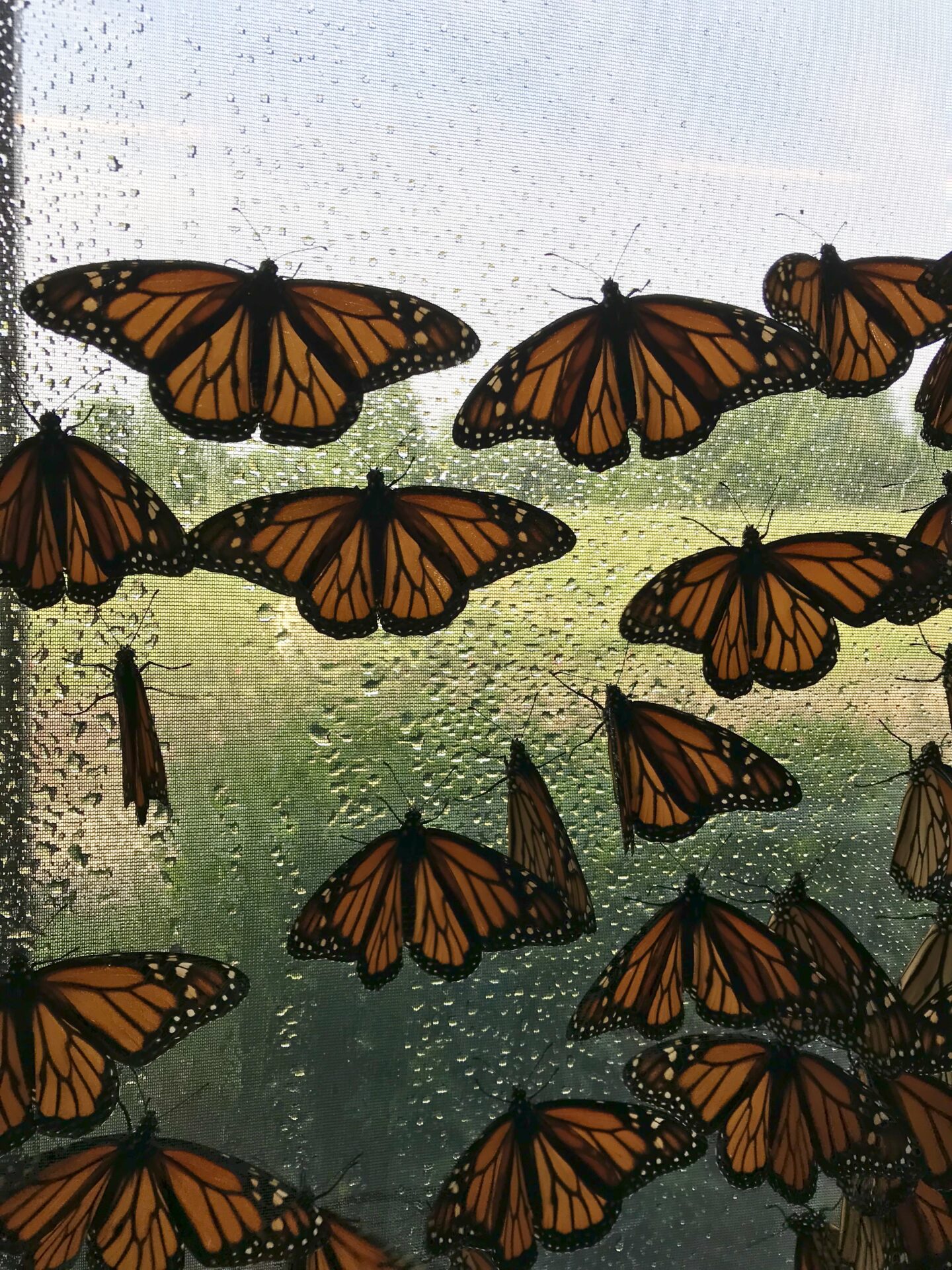Guest post by Jabe Gonder, MRS Summer Research Intern.

6×6 milkweed plot is prepared for a BioTent
This summer’s research is in full swing headed into the second week of July. We are continuing the experimentation of “One and Done”—Rearing Monarch Butterflies on the Wild Side— at our research station. Beginning in early June, the perimeter of thirty 6×6 plots of milkweed were outlined and mowed. This left us with plots containing 25-50 stems of milkweed just waiting to be chewed on by some hungry caterpillars. We identified the 22 best and most lush plots and placed 6×6 Monarch BioTents overtop, leaving the remaining eight for the migratory cycle.
We then began the process of stocking the tents with adequate quantities of monarchs in various instar stages. We used eggs laid by monarchs in our lab, caterpillars hatched from these eggs, caterpillars found on property and also adult butterflies. To minimize the risk of a meltdown, we aired on the side of caution when stocking by doing regular checks of the females’ egg laying and stuck to a 3 caterpillars per stem protocol.
Over the next week, we periodically checked on each tent and would remove any pests. After waiting for the eggs laid by the adult butterflies to hatch, the caterpillars were counted to achieve a baseline stock quantity for every tent. The total stock quantity we placed into our tents was 2680 with hopes of achieving a 50-60% success rate. We also began preparing and stocking plots big enough to hold our 12×12 tents on property and have 6 currently in use and another 9 on hold for the migratory cycle.

Intern Jabe Gonder tracks rearing numbers on a giant white board in the MRS.
As of late, the first groups of Monarchs have begun to eclose on the top of the tents. We are gathering the adults and checking for OE to ensure all butterflies removed from the tents are healthy and able to contribute to the further expansion of the monarch population. We are continuing to learn and adapt the procedural outline for Rearing monarch butterflies on the Wildside. We look forward to checking back in with you all in the coming month about the success of this natural and ecologically conscientious method of rearing the beautiful monarch butterfly!

